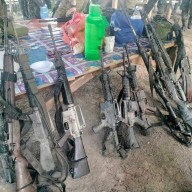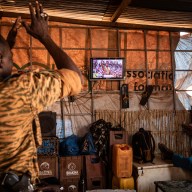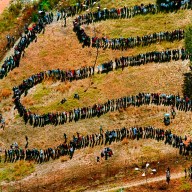TORONTO – Maggie Green went through her entire life thinking she’d never see a photo of her biological father.
But when the 63-year-old British woman tracked down her half-brother near London, she found a photo of a Canadian soldier inside a box of her birth mother’s belongings.
“I picked one photograph out of the case and I kind of sat there and froze because I could see my face looking back at me,” says Green, whose adoptive parents changed her name from Rosemary Fuller.
Green was so sure that the mysterious man in the photo is her father that she launched a search for him, reaching out to genealogy websites, museums, researchers and historians in Canada, hoping to identify him.
“I actually think now I am the spitting image of him really. I think I look more like him than I do my mom,” she says from her home in Weston-Super-Mare, about 30 kilometres west of Bristol, England.
Through legwork, she’s figured out that the soldier who signed the photo “with love, Jim” was a member of the Lorne Scots regiment, which is based in Brampton, Ont.
But after 18 months of fruitless searching, she’s reached a dead end and thinking of hiring a private investigator.
“It’s very hard because I don’t have a surname,” she says.
“There’s very little I know about him to be honest, that’s about all I’ve got. That’s why it’s such a difficult task to find him.”
What she does know is that her birth mother, Mabel Ethel Fuller lived in Abingdon, England during the war, and was 25 when she put Maggie up for adoption soon after she was born. Green was born in September 1947, only a few months after the last Lorne Scots left town.
Melynda Jarratt, a war bride historian from Fredericton, N.B., estimates 30,000 children were born from relationships between European women and Canadian soldiers during the Second World War.
“I’ve got a list as long as my arm of people who are looking for their fathers. (Those offspring are) in Britain, in Scotland, in Holland and Belgium,” she says.
Once the war ended, many returned to Canada, leaving their European girlfriends or wives and those children behind. Jarratt says keeping in touch while handling a long distance phone bill was just too hard, or some soldiers may have rekindled the flame with their old girlfriend in Canada.
Some of those kids left behind, now in their 60s, have managed to find their relatives on either side of the pond, but time is the enemy, and many know that it will be very difficult to find their fathers still alive.
It’s a hard quest. Oftentimes their only clue is a photo. Sometimes, it’s only a first name.
But Jarratt says there have been success stories. She works with researchers across the country who have a variety of specialties such as looking up old marriage certificates or pinpointing the town where a Canadian soldier enlisted.
“I’ve cried with happiness at some of the things that we’ve done here,” she says.
One of her favourite success stories is that of Dutch citizen Willy Van Ee who traced his father back to the Wikwemikong Ojibwa reserve on Ontario’s Manitoulin Island seven years ago.
He’s since embraced his aboriginal Canadian heritage, joining the Canadian Legion, building a totem pole in his front yard in the Netherlands and even receiving an Indian Status card from the Canadian government, Van Ee says.
He says a Canadian passport would make him feel complete, but about a year ago, he received a letter from Ottawa saying he is ineligible for citizenship because he was born out of wedlock.
“My father was fighting for Canada, and his son, me, is fighting against the government of Canada to get the citizenship,” says Van Ee, explaining that he thinks the government shouldn’t stick to “old- fashioned” thinking.
“I hope to get it. I feel a Canadian, really, but I work like a Dutchman,” he says laughing.
Jarratt says most people who trace their fathers back to Canadian soldiers have no interest in receiving Canadian citizenship. But Van Ee’s story is different.
“They’ve got no connection to Canada,” she said. “Willy does, though, because he’s been coming here, and after he found his father’s people he’s just made a spiritual connection to his aboriginal ancestry. It’s a different story with Willy, it sends chills right up your spine.”
Despite his battle with the government, he still makes regular visits to relatives in Canada.
Maggie Green says she’s always felt an attraction to Canada, taking five holidays in the country before ever learning her father was a Canuck. She hopes she’ll be as lucky as Van Ee in tracing her roots.
“My father obviously would be pretty old if he’s still around so I don’t really expect to find him,” she says. “But maybe to find any other family that I have over there would be absolutely fantastic, because you know, you don’t really have anybody that looks like you when you’re adopted.”
















